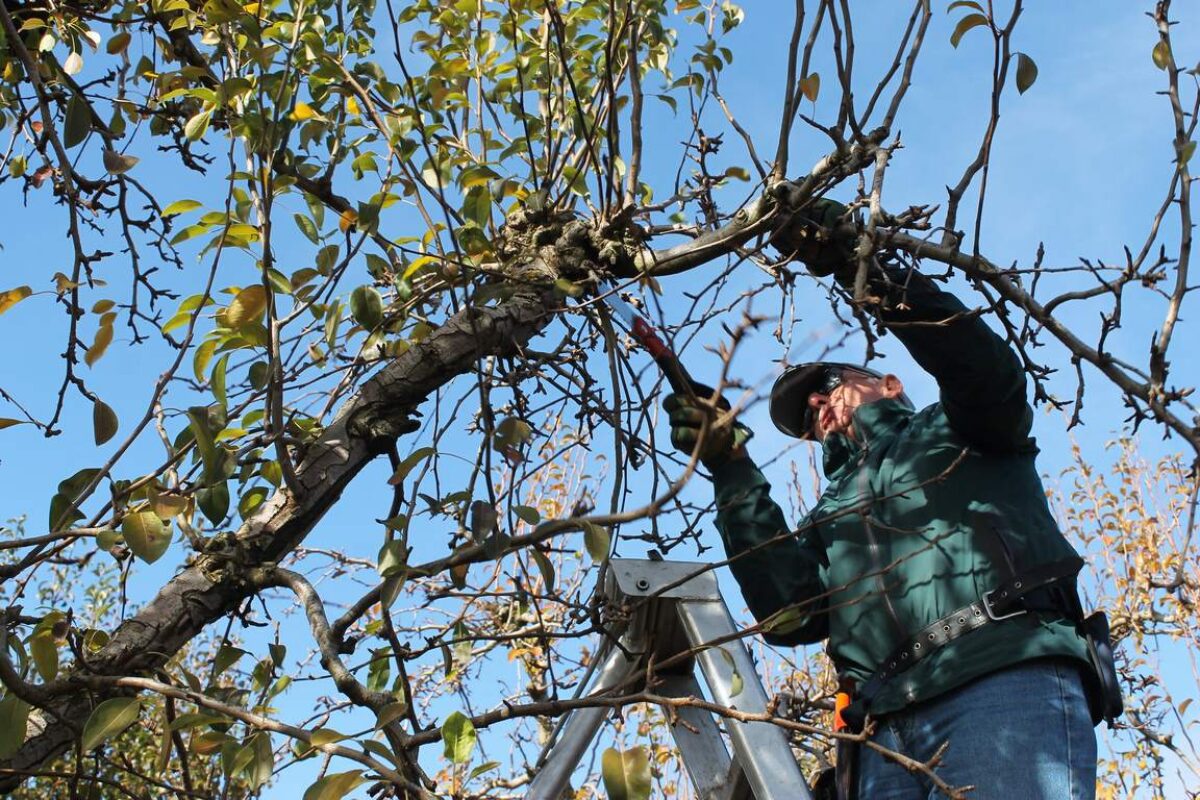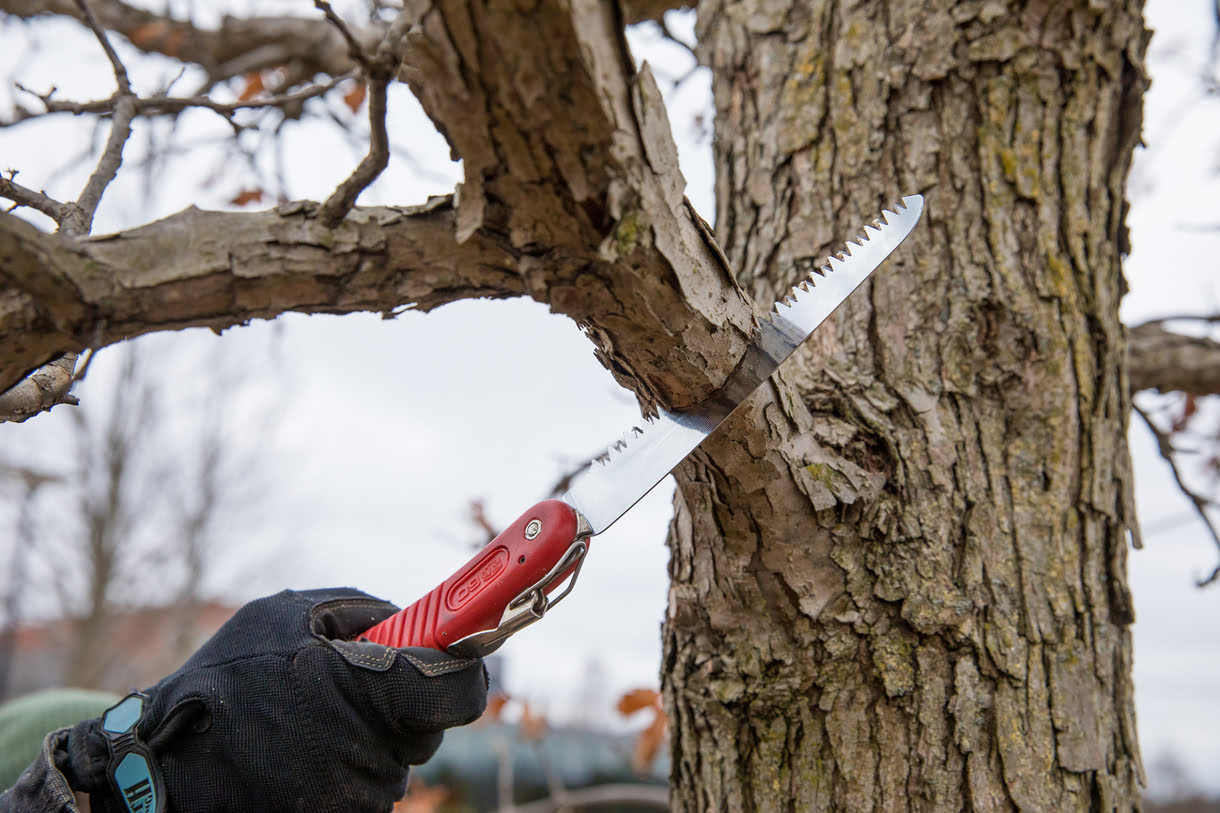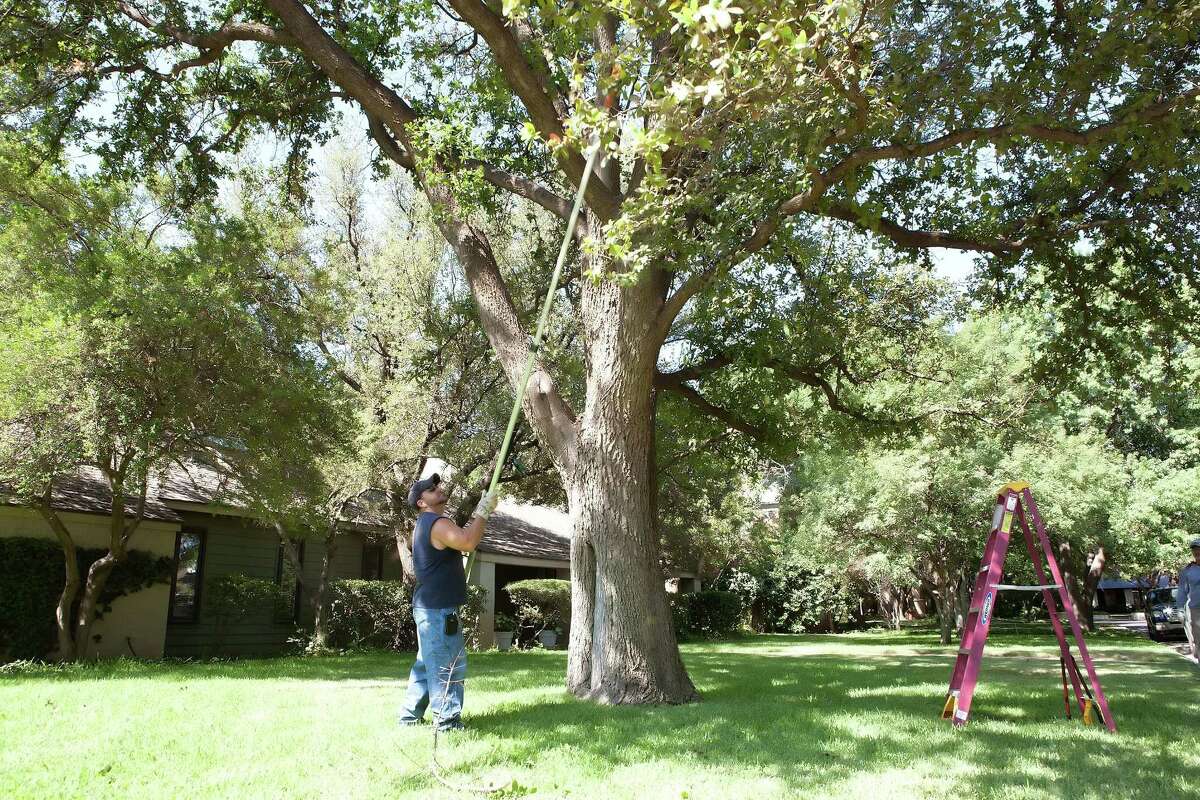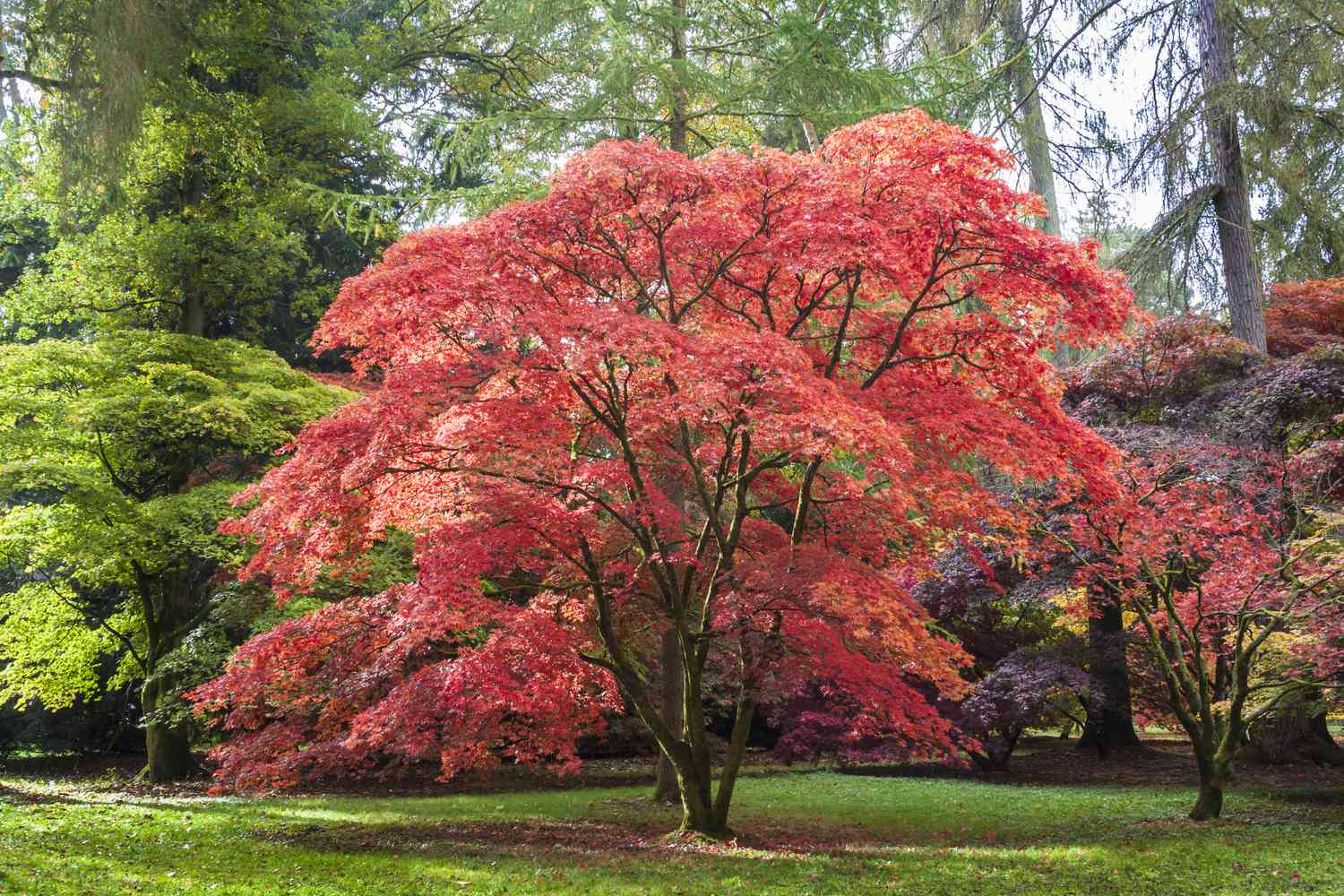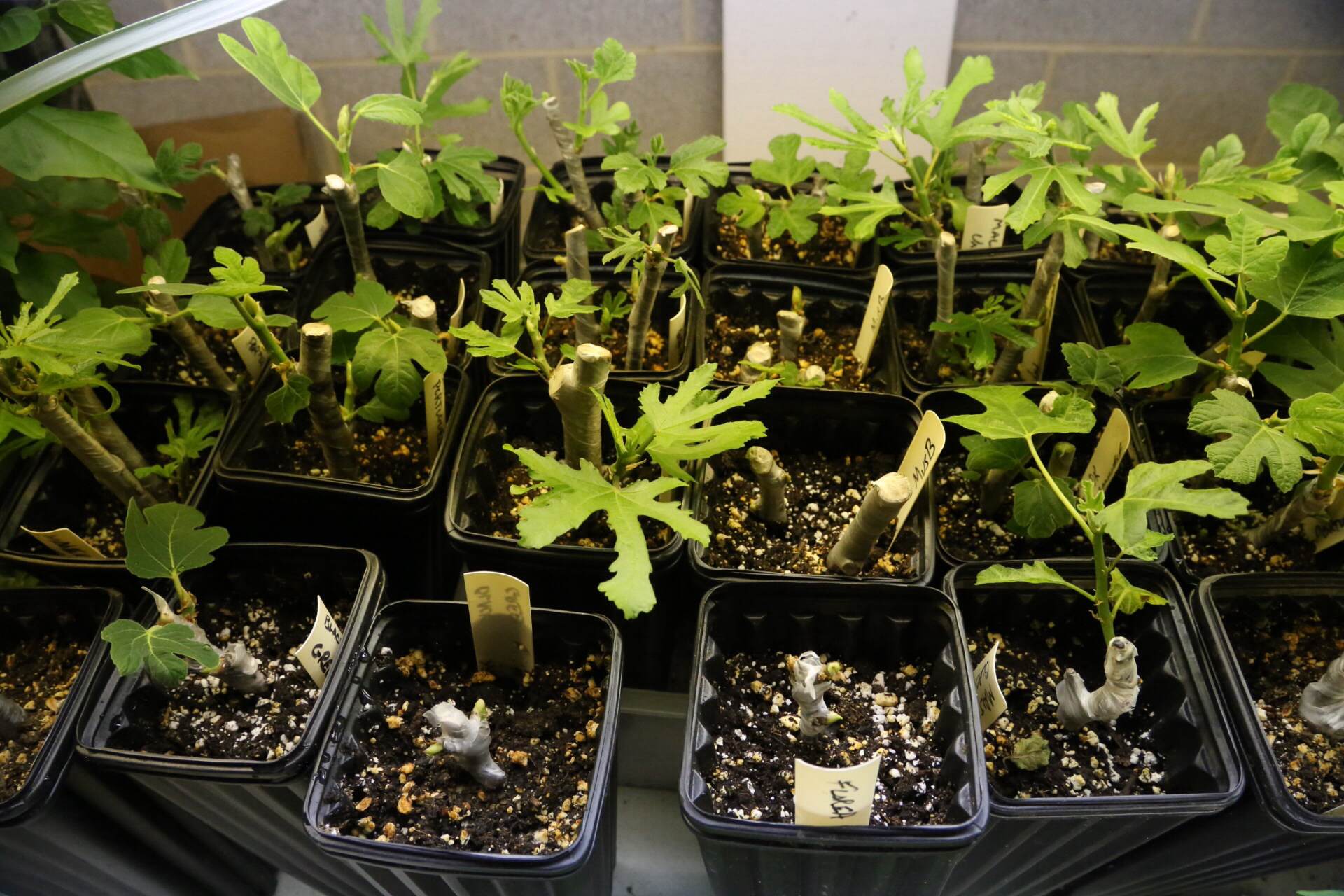Home>Gardening Techniques>Plant Care>When And How To Prune Fig Trees
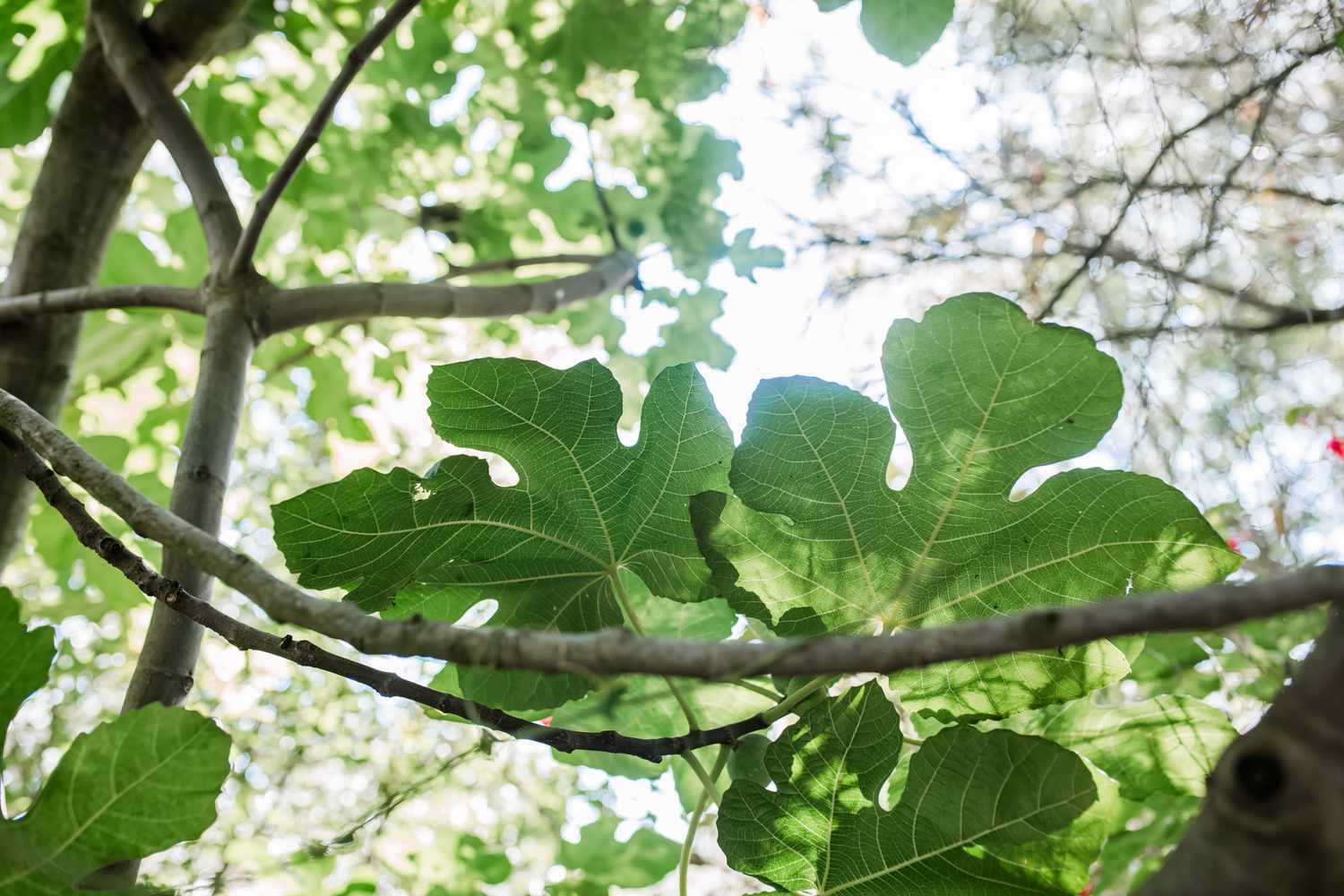

Plant Care
When And How To Prune Fig Trees
Modified: February 7, 2024
Learn the proper timing and techniques for pruning fig trees in this comprehensive guide on plant care. Discover when and how to prune fig trees for optimal growth and fruit production.
(Many of the links in this article redirect to a specific reviewed product. Your purchase of these products through affiliate links helps to generate commission for Chicagolandgardening.com, at no extra cost. Learn more)
Table of Contents
Introduction
Welcome to the fascinating world of fig trees! Whether you are an experienced gardener or just starting out, understanding how to care for your fig trees is crucial for their health and productivity. One essential aspect of fig tree care is proper pruning. Pruning is not only important for maintaining the shape and size of the tree, but it also promotes better airflow, sunlight penetration, and fruit production.
In this guide, we will explore the key considerations involved in pruning fig trees. From understanding why pruning is necessary to knowing when and how to prune, we will cover everything you need to know to keep your fig trees thriving.
Fig trees are known for their lush green foliage and delectable fruits. They are not only a beautiful addition to any garden, but they also provide an abundance of delicious figs when properly cared for. However, without regular pruning, fig trees can become overgrown, susceptible to diseases, and produce fewer fruits.
Pruning is an essential practice that helps maintain the health and productivity of fig trees. By selectively removing unwanted branches, you can ensure that your fig tree receives adequate sunlight, nutrients, and airflow. Pruning also promotes the development of strong, new growth, resulting in a healthier and more appealing tree.
Fig trees can be pruned during specific times of the year to maximize their growth and fruit production. Understanding the ideal time to prune is crucial, as it can vary depending on your climate and the age of the tree. Pruning at the right time can minimize damage, stimulate growth, and enhance fruiting.
When it comes to pruning fig trees, knowing the proper techniques is also important. Improper pruning can do more harm than good, leading to weak growth, disease susceptibility, and reduced yields. By mastering the correct pruning techniques, you can ensure the longevity and vitality of your fig trees.
In this comprehensive guide, we will delve into the world of fig tree pruning. From the tools and equipment you need to the step-by-step techniques for pruning both mature and young fig trees, we will equip you with the knowledge and skills to confidently care for your fig trees.
So, let’s dive in and discover the when and how of pruning fig trees!
Understanding Fig Trees
Before we dive into the details of pruning fig trees, it’s important to have a basic understanding of these remarkable plants. Fig trees, scientifically known as Ficus carica, are deciduous trees that belong to the mulberry family (Moraceae). They are native to the Mediterranean region but have been cultivated and grown in various parts of the world.
Fig trees are known for their medium to large-sized leaves, which are deeply lobed with five to seven main lobes. These leaves create a beautiful canopy and provide shade in hot summer months. Additionally, fig trees have a unique growth habit, with their branches growing horizontally and having a spreading, open shape.
One of the most remarkable features of fig trees is their fruit. Figs are not your typical fruits – they are technically inverted flowers. The fig is actually an enclosed inflorescence, with the tiny flowers located inside the pear-shaped structure. When the fig is fully ripened, it turns soft and sweet, with a variety of colors ranging from green, yellow, purple, or black, depending on the variety.
Figs have been cherished and cultivated for thousands of years due to their delicious taste and nutritional value. They are high in fiber, rich in antioxidants, and contain essential vitamins and minerals. In addition to being a tasty snack, figs can be used in a variety of culinary preparations, including desserts, jams, and preserves.
Fig trees are generally low-maintenance and can thrive in a range of climates, making them suitable for both gardeners and horticultural enthusiasts. They typically prefer full sun and well-drained soil but can tolerate a variety of soil types, including sandy or loamy soil.
Understanding the growth and development pattern of fig trees is crucial for their care and maintenance. Fig trees produce two crops of figs each year. The breba crop, also known as the early crop, forms on the previous year’s growth and ripens in late spring or early summer. The main crop, which is more abundant, develops on the current year’s growth and ripens in late summer or early fall.
Now that we have a better understanding of fig trees and their unique characteristics, let’s explore why pruning is vital for their health and productivity.
Why Prune Fig Trees
Pruning is an essential practice for maintaining the health and productivity of fig trees. While fig trees have a natural tendency to grow into a sprawling and vigorous shape, regular pruning helps to shape and control their growth. Here are some key reasons why pruning fig trees is necessary:
- Promote better airflow and sunlight penetration: By selectively removing branches, pruning helps create a more open canopy, allowing air to circulate more freely. This improved airflow reduces the risk of disease and pests. Additionally, removing excessive branches helps sunlight reach all parts of the tree, promoting photosynthesis and overall plant vigor.
- Encourage fruit production and improve quality: Pruning fig trees stimulates the growth of new shoots, which are responsible for bearing fruit. By removing older branches and focusing energy on newer growth, pruning helps ensure a continuous supply of healthy and productive branches. Additionally, proper pruning improves the quality of the fruit by redirecting nutrients to fewer, larger figs.
- Maintain manageable tree size: Fig trees have a tendency to grow vigorously and can become quite large if left unpruned. Regular pruning helps control their size, making it easier to harvest fruit, apply treatments, and maintain overall tree health. Additionally, a smaller, more compact tree is less prone to wind damage and provides a more aesthetically pleasing appearance in the garden.
- Remove dead or diseased branches: Pruning allows for the removal of dead, damaged, or diseased branches. Removing these branches not only improves the overall appearance of the tree but also prevents the spread of diseases or pests to healthy parts of the tree. Additionally, pruning removes any weak or crossing branches that may be competing for resources and inhibiting healthy growth.
- Renew older trees: Fig trees, especially mature ones, can benefit from rejuvenation pruning. This involves selective removal of older branches to encourage the growth of new, vigorous shoots. Rejuvenation pruning helps revitalize older trees that may have become less productive or have sparse foliage due to age. It stimulates new growth, leading to healthier and more productive trees.
By understanding the importance of pruning fig trees, you can ensure that your trees remain healthy, produce abundant fruits, and provide a visually appealing addition to your garden. Now that we have explored the reasons why pruning is necessary, let’s discover the optimal timing for pruning fig trees.
When to Prune Fig Trees
Timing is crucial when it comes to pruning fig trees. Pruning at the right time ensures that your trees have ample time to recover before the next growing season and minimizes the risk of cold damage or disease transmission. The timing of pruning can vary depending on your climate and the age of the tree. Let’s explore the best times to prune fig trees:
- Early spring: Pruning fig trees in early spring, before new growth emerges, is a common practice. This timing allows you to assess the overall structure of the tree and remove any dead or damaged branches. It’s also an ideal time to shape the tree and thin out any crowded or crossing branches. By pruning in early spring, you stimulate new growth and promote better fruiting later in the season.
- After the main crop harvest: Once the main crop of figs has been harvested in late summer or early fall, it is a good time to prune the tree. Pruning after fruiting allows you to remove any unproductive or overcrowded branches. It also allows the tree to redirect its energy towards storing nutrients for the next growing season. Pruning after harvest gives the tree ample time to recover before the onset of winter.
- Winter pruning: In regions with mild winters, winter pruning can be conducted when the tree is in its dormant state. During the winter, fig trees lose their leaves, making it easier to assess the structure of the tree and identify areas that need pruning. Winter pruning helps control the size of the tree, remove dead wood, and shape the canopy before the onset of spring growth. However, it’s essential to avoid pruning too close to the first frost, as this can lead to cold damage.
It’s important to note that young fig trees require a slightly different pruning schedule compared to mature trees. Young fig trees need to establish a strong framework of branches before they can produce a significant harvest. As a general rule, prune young fig trees in early spring to encourage strong branch development and shape the tree according to your desired form.
Keep in mind that the timing of fig tree pruning may vary depending on your specific climate and growing conditions. If you are unsure about the best time to prune your fig trees, consult with a local gardening expert or horticulturist for personalized advice.
Now that you know the optimal timing for pruning fig trees, let’s move on to the next section to learn the techniques and tools needed for successful pruning.
How to Prune Fig Trees
Pruning fig trees may seem daunting at first, but with the right techniques and tools, it becomes a manageable task. Proper pruning helps maintain the health, shape, and productivity of your fig trees. Here’s a step-by-step guide on how to prune fig trees:
- Assess the tree: Begin by evaluating the overall structure of the tree. Look for any dead, damaged, or diseased branches that need to be removed. Identify any branches that are crossing or rubbing against each other, as these can inhibit proper growth and lead to injuries.
- Choose the desired shape: Decide on the desired shape and size for your fig tree. Common pruning styles include an open vase shape or a single-trunk form. The shape you choose will depend on personal preference and the space available in your garden.
- Prune for structure: Start by pruning any branches that are growing towards the center of the tree. These inward-facing branches can restrict airflow and light penetration. Aim to create an open canopy that allows for better sunlight and air circulation throughout the tree.
- Remove dead and diseased wood: Use a sharp pruning tool, such as pruning shears or loppers, to carefully remove any dead, damaged, or diseased branches. Make clean cuts just above the collar of the branch, where it meets the trunk or main branch.
- Thin out overcrowded branches: Look for any branches that are growing too closely together or rubbing against each other. Choose the weaker of the two branches and carefully remove it to allow for better spacing and airflow.
- Control tree size: If your fig tree is becoming too large or spreading too wide, selectively remove some of the longer or lower branches. This process helps manage the size of the tree and prevents it from encroaching on nearby structures or plants.
- Prune to promote fruiting: To encourage better fruit production, selectively prune the branches that have already fruited and are unlikely to produce again. Focus on younger branches and leave some of the newer growth in place, as these are likely to bear fruit in the upcoming season.
- Step back and assess: After completing the pruning, take a step back and assess the overall shape and symmetry of the tree. Make any additional pruning cuts as needed to achieve the desired form.
Remember to always use sharp and clean pruning tools to make precise cuts. Dull or dirty tools can cause damage or introduce diseases to your fig tree. Additionally, consider wearing protective gloves and eyewear while pruning to protect yourself from thorns or debris.
Pruning fig trees can be done annually or as needed, depending on the growth and condition of your tree. Regular pruning helps maintain the desired shape and health of the tree, ensuring its longevity and productivity.
Now that you have learned the techniques for pruning fig trees, let’s explore the specific tools and equipment you need for successful pruning.
Tools and Equipment Needed
Pruning fig trees requires a few essential tools and equipment to ensure efficient and effective pruning. Having the right tools handy makes the pruning process much smoother. Here’s a list of the tools and equipment you will need:
- Pruning shears: Also known as hand pruners or secateurs, pruning shears are essential for making precise cuts on smaller branches. Look for a pair with sharp blades and a comfortable grip for ease of use.
- Loppers: Loppers have long handles and are designed to cut through thicker branches. They are especially useful for removing larger dead or diseased branches that hand pruners may not be able to handle.
- Saw: A pruning saw is necessary for cutting through thicker branches, particularly those that are more than an inch in diameter. Look for a sharp and sturdy saw with a curved or straight blade, depending on your preference.
- Pole pruner: If you have taller fig trees or branches that are out of reach, a pole pruner allows you to trim those hard-to-reach areas safely. It consists of a telescopic pole with a pruning head attached, allowing for extended reach.
- Gloves: Invest in a good pair of protective gloves to shield your hands from thorns, splinters, or any potential hazards. Choose gloves that provide a combination of flexibility, grip, and durability.
- Safety goggles: When using pruning tools, it’s crucial to protect your eyes from debris and potential injuries. Safety goggles or protective eyewear will help ensure your eyes remain safe while pruning.
- Pruning sealant: While not always necessary, a pruning sealant can be used to cover larger pruning cuts or wounds. The sealant helps prevent moisture loss and keeps pests or diseases from entering the tree. Make sure to use a pruning sealant specifically designed for trees.
- Cleaners and disinfectants: Keeping your pruning tools clean and disinfected is essential to prevent the spread of diseases. Have a mild detergent or soap and a disinfectant solution to clean and sterilize your tools between cuts and after each pruning session.
Before starting any pruning, make sure all your tools are clean, sharp, and in good working condition. Dull or dirty tools can make pruning more difficult and potentially harm the tree. Additionally, ensure your safety by wearing appropriate protective gear.
Having these tools and equipment readily available will enable you to tackle any pruning tasks that arise with your fig trees. Remember to store your tools properly after use, keeping them dry and well-maintained for long-lasting performance.
Now that you know which tools and equipment are necessary for pruning fig trees, let’s move on to the specific techniques employed in pruning.
Pruning Techniques for Fig Trees
Pruning fig trees requires the implementation of specific techniques to achieve the desired results. Understanding and employing these techniques will ensure that your pruning efforts yield healthy and productive fig trees. Here are some key techniques for pruning fig trees:

- Thinning: Thinning involves selectively removing excess branches to improve airflow and light penetration within the tree. Start by removing any branches that are crossing, rubbing, or growing towards the center of the tree. This technique helps decrease disease incidence and promotes the growth of healthier branches.
- Heading back: Heading back entails pruning branches by cutting them back to a lateral bud or branch. This technique stimulates new growth and promotes branching, resulting in a more compact and bushier fig tree. Heading back should be done selectively, removing only a portion of the branch to avoid excessive regrowth.
- Stub pruning: Stub pruning involves cutting branches back to short stubs, usually around 1/4 to 1/2 inch in length. This technique is especially useful for rejuvenating older fig trees and encouraging vigorous new growth. By pruning to stubs, you stimulate the tree to produce new branches from dormant buds.
- Pinching: Pinching refers to the removal of the tip of a branch or stem with your fingers or pruners. This technique encourages lateral branching and compact growth, resulting in a fuller and more productive fig tree. Pinching can be done throughout the growing season, focusing on new shoots or branches that are becoming too vigorous or lengthy.
- Espalier pruning: Espalier pruning involves training the fig tree to grow flat against a wall or support in a specific pattern. This technique is often used for decorative or space-saving purposes. With espalier pruning, you carefully prune the tree’s branches to create a desired design, such as a fan or cordon shape.
When employing these pruning techniques, it is important to make clean and precise cuts. Cut just above a bud or lateral branch, angling the cut away from the bud to encourage outward growth. Remove any stubs or jagged edges to minimize the risk of disease or pest entry.
Remember to step back frequently and assess the overall shape and balance of the tree as you prune. This will help you achieve the desired aesthetic and ensure that the tree’s growth is well-distributed. Regular monitoring and pruning throughout the growing season will promote healthier growth and optimal fruit production.
Now that you have learned the techniques for pruning fig trees, let’s explore some common mistakes to avoid during the pruning process.
Common Mistakes to Avoid
Pruning fig trees can greatly impact their overall health and productivity. However, it’s important to be aware of common mistakes that can occur during the pruning process. By avoiding these mistakes, you can ensure the best possible outcomes for your fig trees. Here are some common mistakes to avoid when pruning fig trees:
- Over-pruning: One of the most common mistakes is over-pruning, which involves removing an excessive amount of branches or foliage. Over-pruning can weaken the tree, reduce its ability to produce fruit, and lead to stunted growth. It’s important to strike a balance and only remove what is necessary to maintain the shape and health of the tree.
- Pruning at the wrong time: Timing is crucial in fig tree pruning. Pruning at the wrong time of year, such as during the winter or when the tree is actively growing, can result in reduced fruit production or potential damage to the tree. Make sure to follow the recommended pruning schedule for your specific climate and the age of your fig tree.
- Using dull or improper tools: Using dull or improper pruning tools can lead to messy cuts that can damage the tree. Make sure your tools are clean, sharp, and appropriate for the task at hand. Clean and sanitize your tools between cuts to prevent the spread of diseases or pests.
- Removing all breba crop branches: Breba crop branches refer to the branches that bear fruit in the early season. It’s important to avoid removing all breba crop branches during pruning, as this will result in a reduced harvest. Instead, selectively thin out some of the breba crop branches, focusing on those that are crossing or overcrowded.
- Ignoring proper branch collar cuts: When making cuts, it’s essential to make them just above the branch collar, where the branch meets the trunk or a larger branch. Avoid making flush cuts or leaving stubs, as they can lead to slow healing and increased risk of infection and disease. Cutting at the branch collar promotes faster healing and better growth.
- Pruning during extreme heat: Pruning fig trees during periods of extreme heat can stress the tree and hinder its ability to recover. It’s best to avoid pruning during heatwaves or when temperatures are significantly high. Opt for pruning during cooler parts of the day or during milder seasons for optimal results.
By understanding and avoiding these common mistakes, you can ensure that your fig tree pruning endeavors are successful and promote the overall health and productivity of your trees. Remember to approach pruning with care and patience, allowing the tree to recover and thrive.
Now that you are aware of the common mistakes to avoid, let’s move on to discussing the specific considerations for pruning mature fig trees.
Pruning Mature Fig Trees
Pruning mature fig trees requires a different approach compared to pruning young trees. Mature fig trees have established branching structures and require maintenance pruning to maintain their overall health and productivity. Here are some specific considerations for pruning mature fig trees:
- Remove dead and diseased branches: Begin by inspecting the tree for any dead, damaged, or diseased branches. Removing these branches helps prevent the spread of disease and allows the tree to allocate its resources to healthier areas. Make clean cuts just above the branch collar, ensuring that no stubs or jagged edges remain.
- Thin out overcrowded branches: Over the years, mature fig trees can develop dense canopies with crowded branches. Thinning out the branches allows for better airflow and light penetration, reducing the risk of diseases such as powdery mildew. Selectively remove branches that are growing inward, crossing, or rubbing against each other. Aim for an open canopy to promote healthier growth.
- Control tree size: Mature fig trees can become large and unwieldy if left unpruned. To control the size and shape of your tree, selectively remove longer or lower branches. This helps maintain an accessible height for harvesting and allows for better light distribution throughout the canopy.
- Renewal pruning: Mature fig trees can benefit from rejuvenation pruning to stimulate new growth and maintain productivity. This involves selectively removing one or two of the oldest branches each year and encouraging the growth of new shoots. Renewal pruning helps revitalize the tree and prevents it from becoming unproductive and overly woody.
- Prune for better fruiting: Focus on pruning branches that have already fruited to encourage the growth of new, productive branches. Remove older branches that are unlikely to bear fruit again and redirect the tree’s energy towards younger, more fruitful growth. This helps ensure consistent and abundant yields.
When pruning mature fig trees, it is important to strike a balance between maintaining the overall health of the tree and promoting a manageable size. Avoid over-pruning, which can reduce fruit production and weaken the tree. Regular maintenance pruning, as well as rejuvenation pruning, will keep your mature fig tree healthy and productive for years to come.
Remember to step back and assess the tree’s overall structure as you prune. Take your time and make precise cuts just above the branch collar. Proper pruning techniques, combined with regular monitoring and care, will help your mature fig tree thrive.
Now that you have learned about pruning mature fig trees, let’s explore the specific considerations for pruning young fig trees.
Pruning Young Fig Trees
Pruning young fig trees is essential to establish a strong framework and shape the tree for optimal growth and productivity. By correctly pruning young fig trees, you can encourage a sturdy structure and promote healthy branch development. Here are some specific considerations for pruning young fig trees:
- Training a central leader: When pruning young fig trees, it’s important to establish a central leader or main trunk. Choose a strong, upright branch as the central leader and remove competing branches that may hinder its growth. This helps create a well-balanced and straight tree trunk.
- Selecting scaffold branches: Scaffold branches are the primary branches that radiate from the central leader. Select 3-5 well-spaced and strong scaffold branches that will form the main framework of the tree. Remove any competing or weak branches that may interfere with the development of the selected scaffold branches.
- Pruning for branch spacing: To create well-spaced and evenly distributed branches, prune away any branches that are growing too closely together or crossing. Aim for a balanced tree structure with ample space between branches to allow for good airflow and light penetration.
- Promoting lateral branching: Encourage lateral branching by lightly pruning the tips of the scaffold branches. This stimulates the growth of side shoots and promotes a more compact and bushy growth habit. Allow these lateral branches to develop into fruitful branches as the tree matures.
- Be mindful of pruning intensity: When pruning young fig trees, it’s important not to remove too much foliage or branches. Young trees need ample leaf surface to produce energy through photosynthesis. Prune selectively, focusing on shaping the tree and removing any overly vigorous or crossing branches.
Pruning young fig trees should be done annually in the early spring. At this time, the tree is still dormant, allowing for better visibility when selecting and shaping branches. By diligently pruning and training young fig trees, you lay the foundation for a well-structured and productive tree in the future.
Regular monitoring and adjustments are necessary as the young fig tree grows. As it develops, continue to prune selectively to maintain an open canopy and promote strong branch growth. Remember to step back and assess the overall structure to ensure balanced branching and proper tree form.
With careful pruning and attention to detail, your young fig tree will develop into a healthy and fruitful addition to your garden or orchard.
Now that you know how to prune young fig trees, let’s summarize what we have covered in this article.
Conclusion
Pruning fig trees is a crucial aspect of their care and maintenance. By understanding when and how to prune, as well as avoiding common mistakes, you can ensure the health, productivity, and aesthetic appeal of your fig trees.
Throughout this guide, we have explored the importance of pruning fig trees to promote better airflow, sunlight penetration, and fruit production. We have discussed the optimal timing for pruning based on the age of the tree and the specific considerations for both mature and young fig trees.
We also delved into the various pruning techniques, such as thinning, heading back, stub pruning, pinching, and espalier pruning. Understanding and implementing these techniques will help you shape and maintain a well-structured fig tree.
When pruning fig trees, it’s essential to have the right tools and equipment, including pruning shears, loppers, a saw, gloves, safety goggles, and cleaning supplies. Using sharp and clean tools ensures precision and minimizes the risk of diseases spreading.
Furthermore, we discussed the common mistakes to avoid, such as over-pruning, pruning at the wrong time, and ignoring proper branch collar cuts. By being aware of these mistakes, you can optimize your pruning practices and promote the overall health of your fig trees.
Whether you are pruning mature fig trees to maintain their structure and productivity or shaping young trees for optimal growth, remember to step back, assess, and make thoughtful pruning decisions. Regular monitoring, care, and adjustments will be key in maintaining the health and vitality of your fig trees.
By following the guidelines outlined in this comprehensive guide, you are well-equipped to confidently prune your fig trees. Enjoy the process of shaping and caring for your fig trees, and appreciate the abundant harvests and beauty they will bring to your garden.
